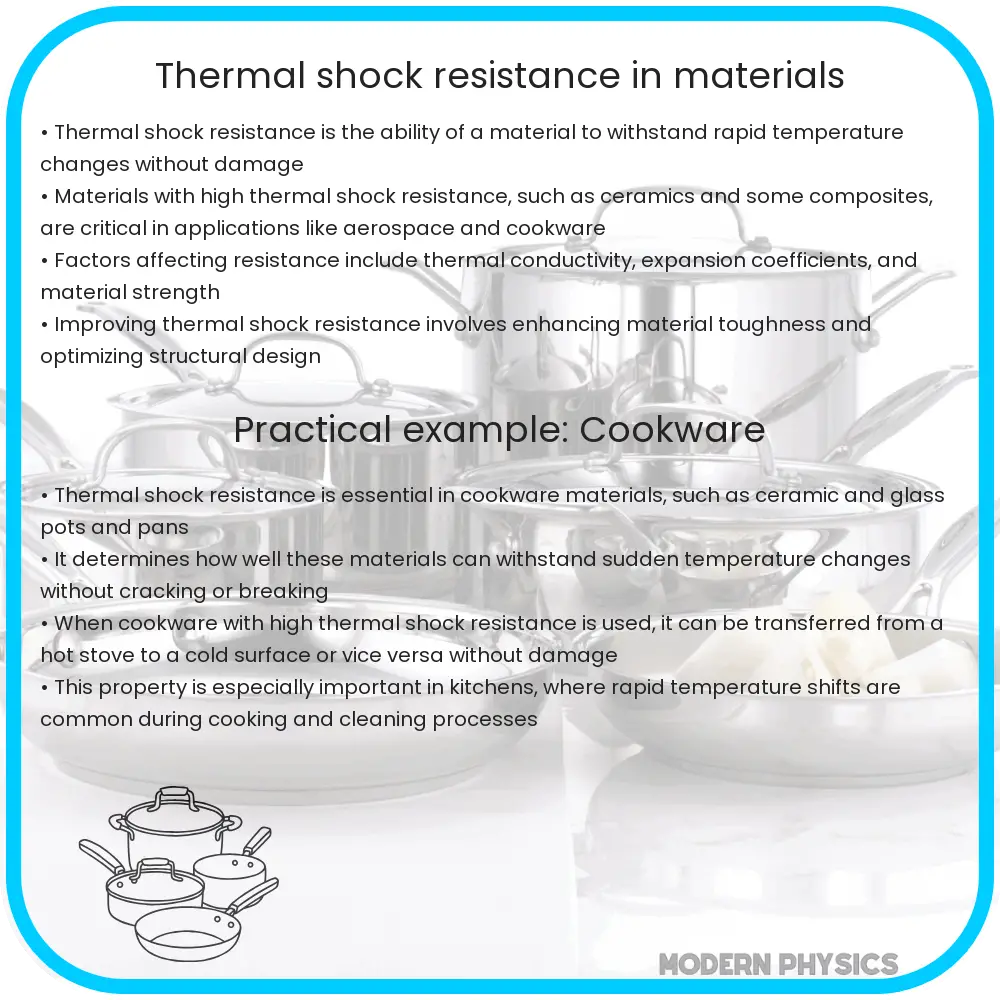Explore the importance of thermal shock resistance in materials, covering factors, applications, and advancements in material science for durability.

Understanding Thermal Shock Resistance
Thermal shock resistance is a crucial property of materials used in environments where they are subjected to rapid temperature changes. This attribute is not only about enduring extreme temperatures but also about how effectively a material can handle the stress of rapid heating or cooling. It is a key factor in determining the durability, adaptability, and performance of materials in various industrial applications.
Factors Influencing Thermal Shock Resistance
Several factors play a significant role in a material’s thermal shock resistance. These include:
- Thermal Expansion Coefficient: Materials with lower thermal expansion coefficients are less prone to stress under temperature changes. This coefficient measures how much a material expands or contracts when heated or cooled.
- Thermal Conductivity: High thermal conductivity allows for quick heat distribution throughout the material, reducing the likelihood of stress concentrations and cracks.
- Strength and Toughness: The intrinsic strength and toughness of a material contribute to its ability to withstand thermal stress without fracturing.
Applications in Various Industries
Materials with high thermal shock resistance find applications across multiple industries:
- Aerospace: Components like turbine blades and heat shields require materials that can withstand rapid temperature changes during flight and re-entry.
- Electronics: Electronic components, such as semiconductor chips, demand materials that can endure thermal cycling without degrading performance.
- Ceramics and Glass: These industries often use materials like borosilicate glass (SiO2) and zirconium dioxide (ZrO2), known for their excellent thermal shock properties.
Understanding the thermal shock resistance of materials is not just about assessing their ability to withstand extreme temperatures; it’s about evaluating how they perform under rapid temperature fluctuations. This understanding is crucial for designing products that are both durable and reliable in demanding environments.
In the next section, we will delve deeper into the mechanisms of thermal shock and explore some specific materials known for their exceptional thermal shock resistance.
Mechanisms of Thermal Shock in Materials
At the heart of thermal shock resistance is the material’s ability to absorb and dissipate thermal energy. When a material is subjected to a sudden temperature change, different parts of it expand or contract at different rates. This differential expansion can lead to the development of thermal stress. If the stress exceeds the material’s strength, it can cause cracks or even complete failure. The severity of thermal shock is often a function of the temperature difference, the material’s thermal conductivity, and its expansion coefficient.
Materials Known for Exceptional Thermal Shock Resistance
Certain materials stand out for their exceptional thermal shock resistance:
- Advanced Ceramics: Materials like silicon carbide (SiC) and alumina (Al2O3) are renowned for their high thermal shock resistance. They are widely used in applications that require resistance to extreme temperatures, such as in kiln linings and automotive brakes.
- Refractory Metals: Tungsten (W) and molybdenum (Mo) are examples of refractory metals with high melting points and excellent thermal shock resistance, making them ideal for high-temperature industrial processes.
- Composite Materials: Composites, such as carbon fiber-reinforced polymers, are engineered to have a balance of high strength and low thermal expansion, providing superior thermal shock resistance for aerospace and automotive applications.
Improving Thermal Shock Resistance
Advancements in material science continue to improve thermal shock resistance. Techniques like adding reinforcing fibers, creating composite materials, and developing novel alloys contribute to enhancing the durability and performance of materials under thermal stress. Additionally, computational modeling and simulation are increasingly used to predict and mitigate the effects of thermal shock in the design phase, leading to more resilient and reliable products.
Conclusion
Thermal shock resistance is a pivotal property in materials science, playing a critical role in the longevity and functionality of products across a wide range of industries. Understanding and improving this characteristic are essential for developing materials that can reliably perform in environments subjected to extreme and rapid temperature changes. As technology advances, the pursuit of materials with superior thermal shock resistance continues, promising even greater durability, adaptability, and performance in future applications.
